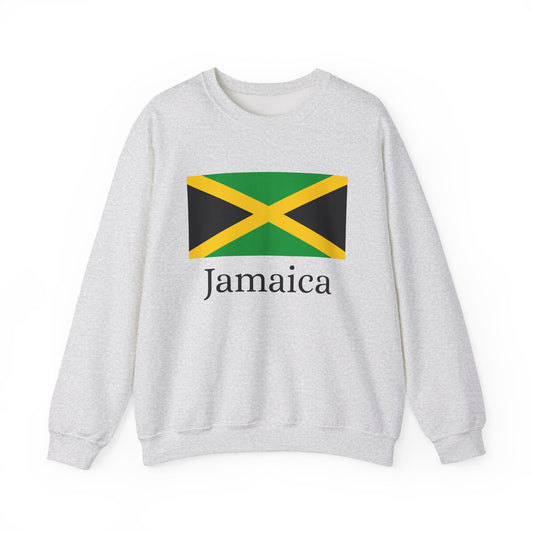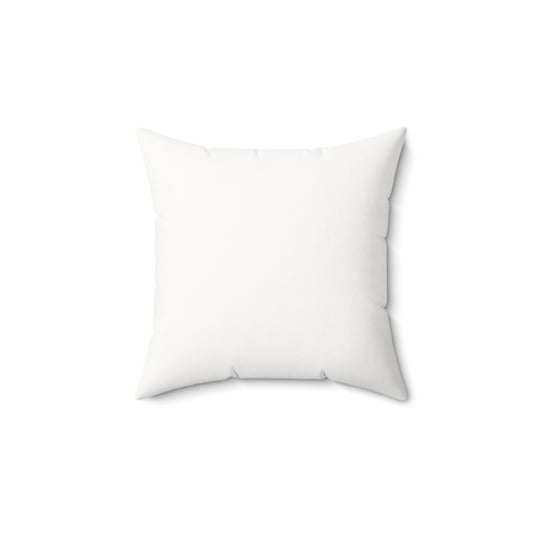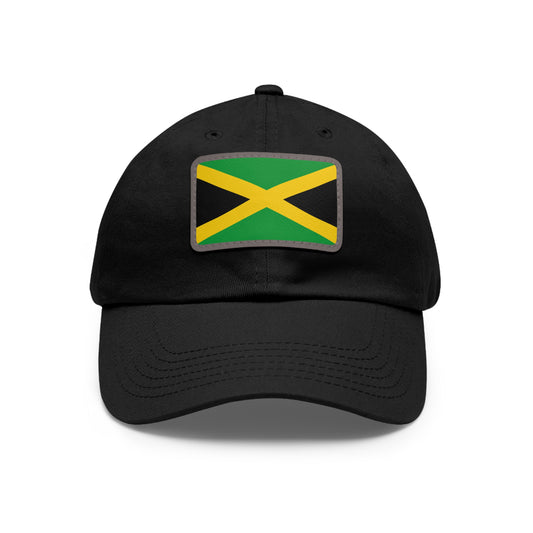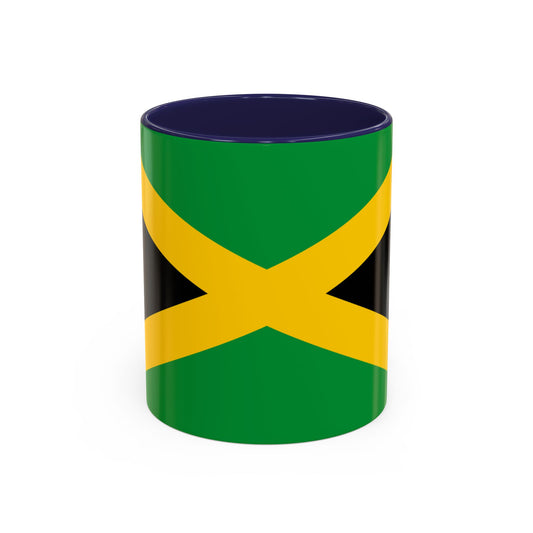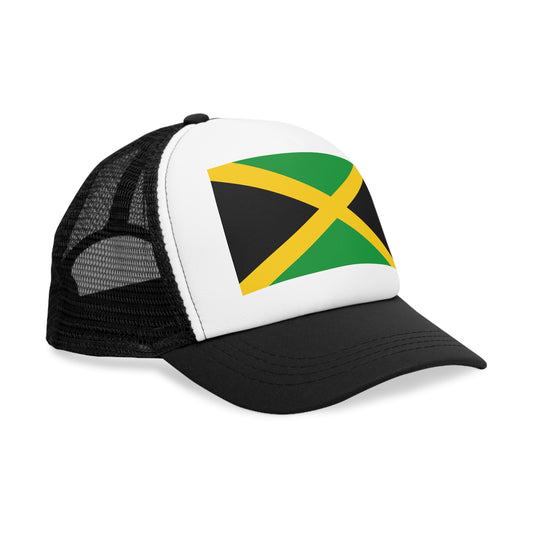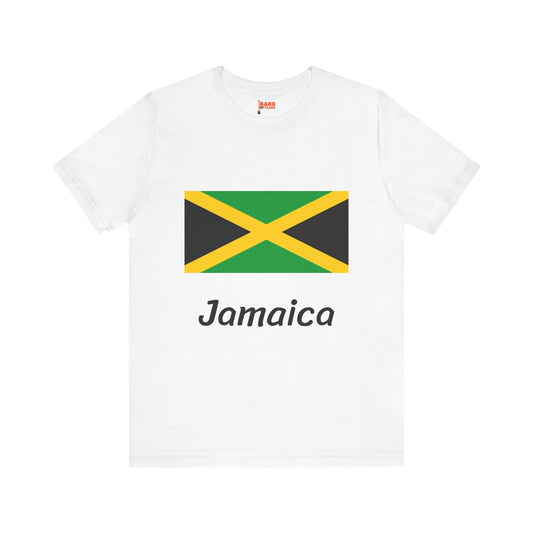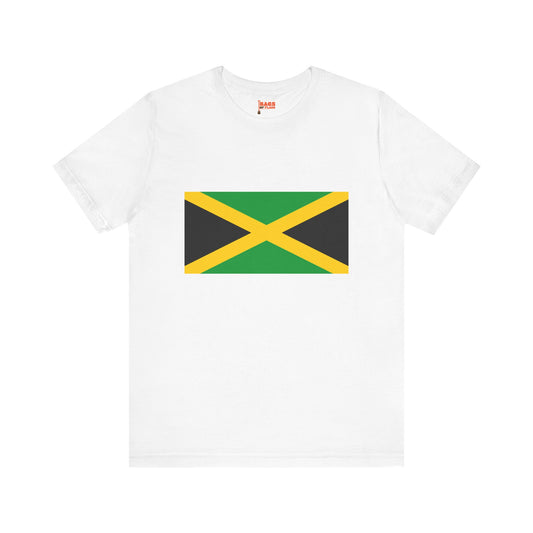-
Jamaica Sweatshirt
Regular price $34.15 USDRegular priceUnit price / per -
Jamaica Pillow
Regular price $22.65 USDRegular priceUnit price / per -
Jamaica Backpack
Regular price $59.79 USDRegular priceUnit price / per -
Jamaica Leather Patch Hat
Regular price $18.85 USDRegular priceUnit price / per -
Jamaica Mug
Regular price $11.65 USDRegular priceUnit price / per -
Jamaica Trucker Cap
Regular price $14.90 USDRegular priceUnit price / per -
Jamaica Hoodies
Regular price $34.40 USDRegular priceUnit price / per -
Jamaica T-shirts
Regular price $22.79 USDRegular priceUnit price / per -
Jamaica Flag Hoodies
Regular price $34.40 USDRegular priceUnit price / per -
Jamaica Flag on T-shirt
Regular price $22.79 USDRegular priceUnit price / per
Collection: Jamaica
The Jamaica flag symbolizes pride and unity for the Caribbean nation. Its vibrant colors and unique design hold significant meaning for the Jamaican people. We will delve into the flag's history, symbolism, and relevance.
Overview of the Jamaica Flag

The design of the Jamaica flag is both symbolic and visually striking, featuring bold colors arranged in a distinctive pattern. The flag is divided diagonally from the lower hoist-side corner, creating four triangles. The top and bottom triangles are green, while the hoist side and fly side triangles are black and gold, respectively. This layout is aesthetically pleasing and imbued with a profound meaning that reflects Jamaica's national identity and cultural heritage.
The use of green, black, and gold sets the Jamaica flag apart, making it recognizable globally. This design, chosen from a national competition, perfectly encapsulates the essence of Jamaica, from its rich natural landscapes to the indomitable spirit of its people. The geometric precision of the diagonal cross and the balance of colors contribute to the flag's unique appeal, symbolizing a nation moving forward in unity and strength.
Historical Context of the Jamaica Flag
The Jamaica flag, a symbol of national independence and identity, was adopted on August 6, 1962. This significant date marked Jamaica's emergence as a sovereign nation, breaking away from nearly 300 years of British colonial rule. The flag's inception resulted from a national competition that sought to find a design that encapsulated the spirit and aspirations of the Jamaican people. The chosen design stood out for its unique symbolism and was the work of a Jamaican college student who contributed to a pivotal moment in the country's history.
The original flag design, as adopted in 1962, has remained unchanged, a testament to its enduring significance and the powerful representation it holds for Jamaicans. The adoption of the flag was more than just introducing a national symbol; it was a declaration of Jamaica's new-found sovereignty and a collective step towards forging a distinct national identity. The flag became a rallying point during the independence celebrations, symbolizing hope, liberation, and the beginning of a new chapter in Jamaica's history.
The introduction of the Jamaica flag occurred alongside the establishment of other national symbols and the constitution, further solidifying the country's independence. Its adoption reflects a momentous period in Jamaican history, intertwining the aspirations of its people with the national identity they continue to shape and celebrate.
Symbolism Behind the Jamaica Flag

The vibrant hues of the Jamaica flag carry rich meanings that encapsulate the spirit and essence of the nation. Black is a tribute to the resilient and enduring spirit of the Jamaican people, representing their strength in overcoming hardships and challenges. Green symbolizes the island's abundant natural beauty, from its verdant landscapes to its fertile soils, highlighting the importance of agriculture and the environment to Jamaica's identity and economy. Gold captures the radiant sunshine that bathes the island and symbolizes the country's wealth, not only in terms of its natural resources but also through the warmth and creativity of its people.
The striking diagonal cross signifies a crossroads or a choice, pointing towards the nation's hope and optimism for the future while acknowledging its historical roots in Christianity and the values it represents. Together, these colors and symbols weave a narrative of a people deeply connected to their land, proud of their cultural heritage, and optimistic about their future, making the Jamaica flag a profound emblem of national pride.
Current Relevance of the Jamaica Flag
Today, the Jamaica flag remains a vital part of the nation's identity, serving as a prominent emblem at various state functions, cultural festivities, and international sporting events where Jamaicans are represented. It waves proudly at government institutions, marking the country's sovereignty and the unity of its people. During significant national holidays, such as Independence Day and Heroes Day, the flag takes center stage in celebrations and commemorations, embodying the spirit of freedom and the achievements of the Jamaican people.
In the contemporary context, the Jamaica flag also plays a role in expressing national pride among the diaspora. Jamaican communities worldwide display the flag as a symbol of their cultural heritage, especially during diaspora events and international gatherings, reinforcing their connection to the homeland.
Despite its widespread acceptance and use, the Jamaica flag has sometimes been at the heart of discussions and debates on national identity and representation. Issues surrounding its representation in media and its unauthorized use have sparked conversations about respect for national symbols and the boundaries of their use. These debates highlight the ongoing relevance of the flag as a symbol that not only unites Jamaicans but also prompts reflection on the values and aspirations that define the nation.
Additional Facts About the Jamaica Flag
The etiquette surrounding the Jamaica flag has distinct guidelines designed to preserve its dignity and symbolism. The flag must always be displayed prominently and with respect. It is considered disrespectful for the flag to contact the ground, emphasizing the importance of careful handling. When flown, care must be taken to ensure the flag is not displayed upside vertically, as each color and section has its designated position reflecting the nation's identity. The protocol dictates that the flag should be hoisted at dawn and respectfully lowered at dusk, adhering to traditional practices of honoring national symbols.
Another interesting tidbit about the Jamaica flag is its unique color scheme. Unlike many national flags, it steers clear of the standard color trio of red, white, and blue, making it stand out for its distinctive choice of green, black, and gold. This not only sets the Jamaica flag apart visually on the international stage but also emphasizes the unique cultural and natural heritage of the country. These practices and features underscore the respect and pride that Jamaicans have for their flag, reinforcing its status as a cherished national symbol.


